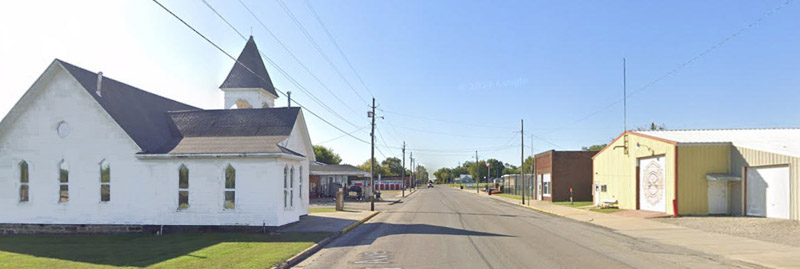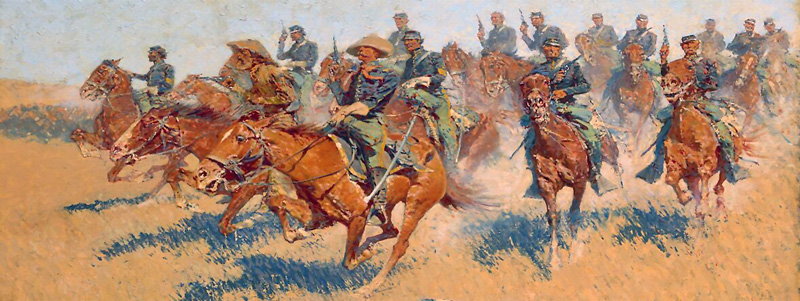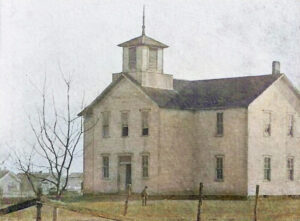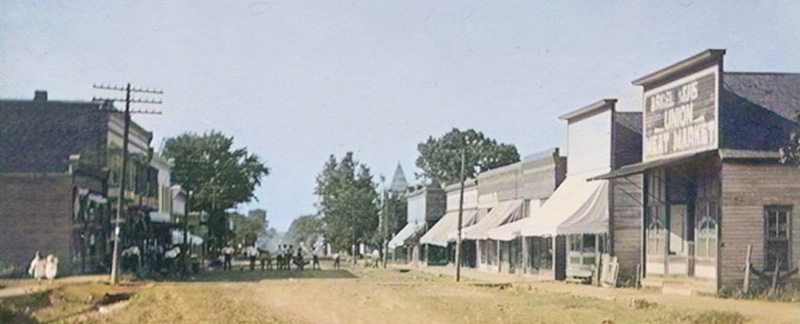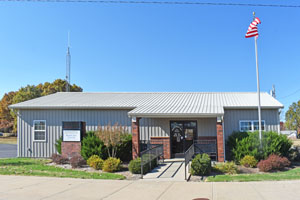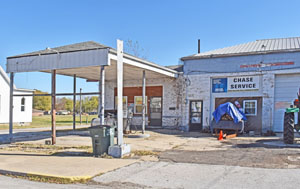Mulberry, Kansas, is a small town in Lincoln and Washington Townships in eastern Crawford County. As of the 2020 census, the city’s population was 409, and its total area was.50 square miles.
In the early days of the settlement of Crawford County, a beautiful grove of wild mulberry trees stood. Here, the Osage Indians frequently camped during hunting expeditions. From the top of the ridge, back of the grove, they could look far away to the northeast and south, and no enemy or wild game could approach without being discovered.
When the military road was established between Fort Scott, Kansas, and Fort Gibson, Oklahoma, it passed within a few rods of this beautiful grove, and the place became the camping ground of the frontiersmen in this lonely journey.
N.W. Taylor founded Mulberry Grove around 1866. It was hoped that its location in a grove of mulberry trees, along with silkworms, would make Mulberry the silk capital of the United States. That year, a stage line was established on the military road. Taylor started a store and established a post office on June 15, 1869.
When the Cherryvale Division of the Kansas City, Fort Scott, and Gulf Railroad was built, the town was laid out. Two brothers from Ohio, A.M. and Jesse Brown, were among the first to locate in the Mulberry.
In about 1871, mines were opened nearby, and the volume of business increased until extensive mining was carried on, and Mulberry became an extensive shipping point.
In 1872, William Lewis Miller and his wife, Mary D. Sadler Miller, of German origin, arrived in Mulberry when there were but seven or eight families in the little hamlet. William Lewis Miller became the first merchant of the community. He later established a flour mill three miles from the town, the first in this section of the state. In the following years, the Miller family developed its soil as agriculturists, advanced its prestige as coal operators, added impetus to its growth along commercial lines as merchants, contributed to its financial strength as bankers, and its character gave strength by a fine type of citizenship.
Before long, churches, schools, mills, stores, hotels, and all the things that make a town were established at Mulberry.
On May 21, 1892, its name changed from Mulberry Grove to Mulberry.
In 1895, Jonathan G. Miller founded what has since grown to be one of the leading concerns in the northern section of Crawford County, that of Miller Brothers & Company. This firm consisted of William Lewis Miller, his three sons, William Henry, Clarence Quinter, and Jonathan Garrett Miller, and his daughter, Miss Ada L. Miller. The Miller Brothers and Company’s mine was located north of Mulberry on the Kansas City, Fort Scott & Memphis railway. The company would develop more coal fields and find a market for more coal than any other firm in Kansas. The company also dealt in merchandise and farm implements.
William Lewis Miller established the first steam shovel to lift the overburden off the top in 1900 and introduced the shovel for stripping. He should also be given credit for the invention of the double shaker machine, which he introduced but failed to patent.
In 1907, the Miller brothers entered the banking field by establishing the Mulberry State Bank.
By 1910, Mulberry was an incorporated town at the junction of the Kansas City Southern and the St. Louis and San Francisco Railroads. It had a weekly newspaper called the News, a flour mill, all retail store lines, telegraph and express offices, and an international money order post office with two rural routes. According to the 1910 census, the population was 997.
In the fall of 1913, the Miller brothers sold the Mulberry State Bank and founded the Pittsburg State Bank in February 1914. This concern had a $50,000 capital and a surplus of $5,000. In February 1916, the same stockholders took over the Miners State Bank at Mulberry, with a capital of $20,000.
On January 14, 1914, six men were killed in an accident at Mine #7, one mile south of Mulberry, Kansas. After three cage loads of six men had already been lowered down the 130-foot deep shaft in the west cage, six men entered the cage for its fourth trip at 7:10 a.m. As the men were being lowered, a cable broke 14 feet 6 inches above the top of the cage. The break was probably 60 to 70 feet from the bottom and fell to the bottom of the shaft, making an indention eleven inches deep and fatally injuring all six men. The men killed were William Baird, Addison Buchanon, Arthur Connery, Fritz Ginther, John Montanelli, and Tom Strayborn.
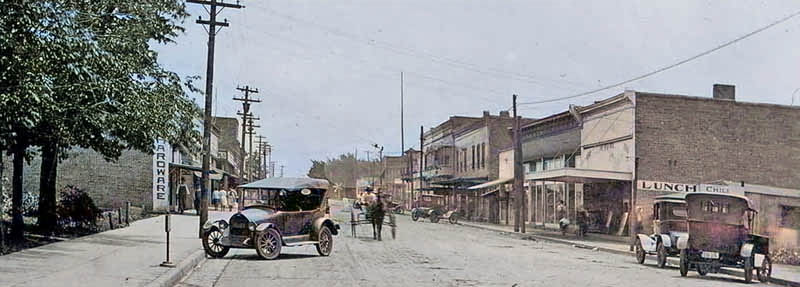
Mulberry, Kansas Street Scene, 1923.
Mulberry’s population peaked at 2,697 in 1920. In the following years, as the coal mines shut down, it gradually declined.
Mulberry High School was closed through school unification and was later torn down. Today, the community is served by the Northeast USD 246 public school district, headquartered in Arma, Kansas.
Mulberry is 12 miles east of Girard, the county seat.
©Kathy Alexander/Legends of Kansas, updated April 2025.
Also See:
Extinct Towns of Crawford County
Sources:
Blackmar, Frank W.; Kansas: A Cyclopedia of State History, Vol I; Standard Publishing Company, Chicago, IL 1912.
City of Mulberry
Connelley, William E.; A Standard History of Kansas and Kansans, Lewis, Chicago, 1918.
Cutler, William G; History of Kansas; A. T. Andreas, Chicago, IL, 1883.
Explore Crawford County
Home Authors; A Twentieth Century History and Biographical Record of Crawford County, KS, Lewis Publishing Company, Chicago, IL, 1905
Mulberry Memories – Facebook
Wikipedia

